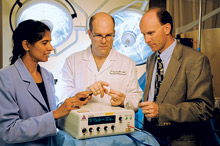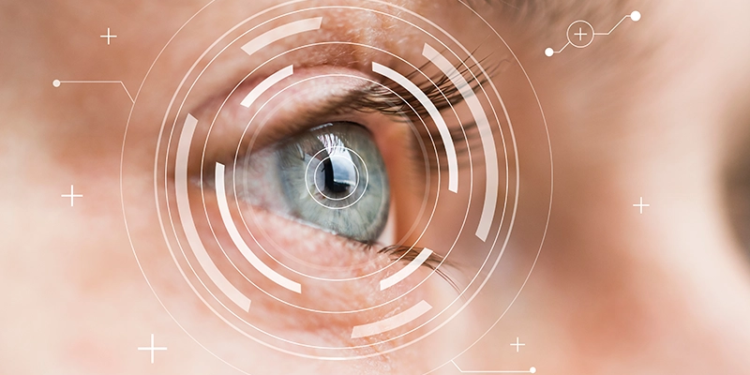An interdisciplinary Vanderbilt University (Vanderbilt), Nashville, Tennessee, research team including School of Engineering Professors of Biomedical Engineering and Neurological Surgery E. Duco Jansen, PhD, and Anita Mahadevan-Jansen, PhD, and Vanderbilt Medical Center Associate Professor of Neurosurgery and Biomedical Engineering Peter Konrad, MD, PhD, will play a critical role in an effort to design prosthetic arms and legs that work naturally by providing a two-way link with the peripheral nervous system.

From left, Anita Mahadevan-Jansen, Pete Konrad, and Duco Jansen. Photograph courtesy of Vanderbilt University.
The two-year, $5.6 million Defense Advanced Research Projects Agency (DARPA) initiative is being led by a research team at the Southern Methodist University (SMU), Dallas, Texas, Neurophotonics Research Center, and includes collaborators at Case Western Reserve University, Cleveland, Ohio; University of Texas, Dallas; the University of North Texas, Denton; and several industrial partners, including Lockheed Martin (Aculight), Texas Instruments, and National Instruments.
The Vanderbilt team’s goal is to use beams of light to allow amputees not only to control but also to feel the movement of prosthetic limbs. Such a system must have two major capabilities: It must sense the activity of motor nerves in order to direct the motion of the prosthetic device and it must stimulate sensory nerves to provide the user’s brain with the feedback it needs to control the device’s movements.
Five years ago, the Vanderbilt trio helped kick start the neurophotonics field when it demonstrated that a low-power infrared laser beam can stimulate peripheral nerves in a live rat. Since then, the research team has shown that laser stimulation is repeatable, can be done without damaging or overheating the nerve cells, and can be focused tightly enough to stimulate individual neurons-a precision that is not possible with electrical stimulation. The Vanderbilt team is heading up the nerve stimulation portion of the project.
“I’m pretty confident we can deliver on the stimulation side,” Jansen said. “The sensing side is at an earlier stage of development, and there are numerous engineering challenges that need to be addressed.”
The SMU researchers are heading up the sensing effort, which will be based on an extremely sensitive “whispering gallery” micro-optical sensor technology system that they have developed.
Fortunately, the researchers do not have to work at the level of individual neurons to create a prosthesis-control system. In the peripheral nervous system, nerves are organized into bundles called fascicles, and different fascicles control basic movements such as moving fingers and toes.
“So far, all the work we have done with stimulation involves exposing nerves and shining a laser on them at a right angle,” Jansen said. “Obviously, this won’t work for a prosthetic limb application.”
The Vanderbilt team has developed a preliminary design for an implantable “cuff” that would wrap around a nerve. One part of the cuff would contain optical fibers that run parallel to the nerve that are capped with tiny, 45-degree mirrors that would aim laser beams at individual fascicles.
“We’re certain we can stimulate the individual fascicles that lie just below the surface of a nerve,” Jansen said. “Reaching the internal fascicles will be more difficult, but we’ve got some ideas how to do this.”
Another part of the cuff would contain the SMU nerve sensors, which would be used for controlling the prosthetic limb. Ideally, the nerve sensors would be implanted in the fascicles containing the motor neurons that were used to move the original limb. Instead of relaxing and contracting the missing muscles, however, the sensors would translate the nerve impulses into signals in optical fibers attached to the prosthetic limb that instruct it to produce the same basic movements.
Nerve stimulation, on the other hand, would be focused on sensory nerves that provide the brain with feedback about what the limb is doing and feeling. For example, sensors in the fingers of a prosthetic arm could be hooked into sensory nerves and provide the amputee with a sense of how much pressure he is putting on a raw egg, or any other object he is holding in his hand.
Editor’s note: This story has been adapted from materials provided by Vanderbilt University.




